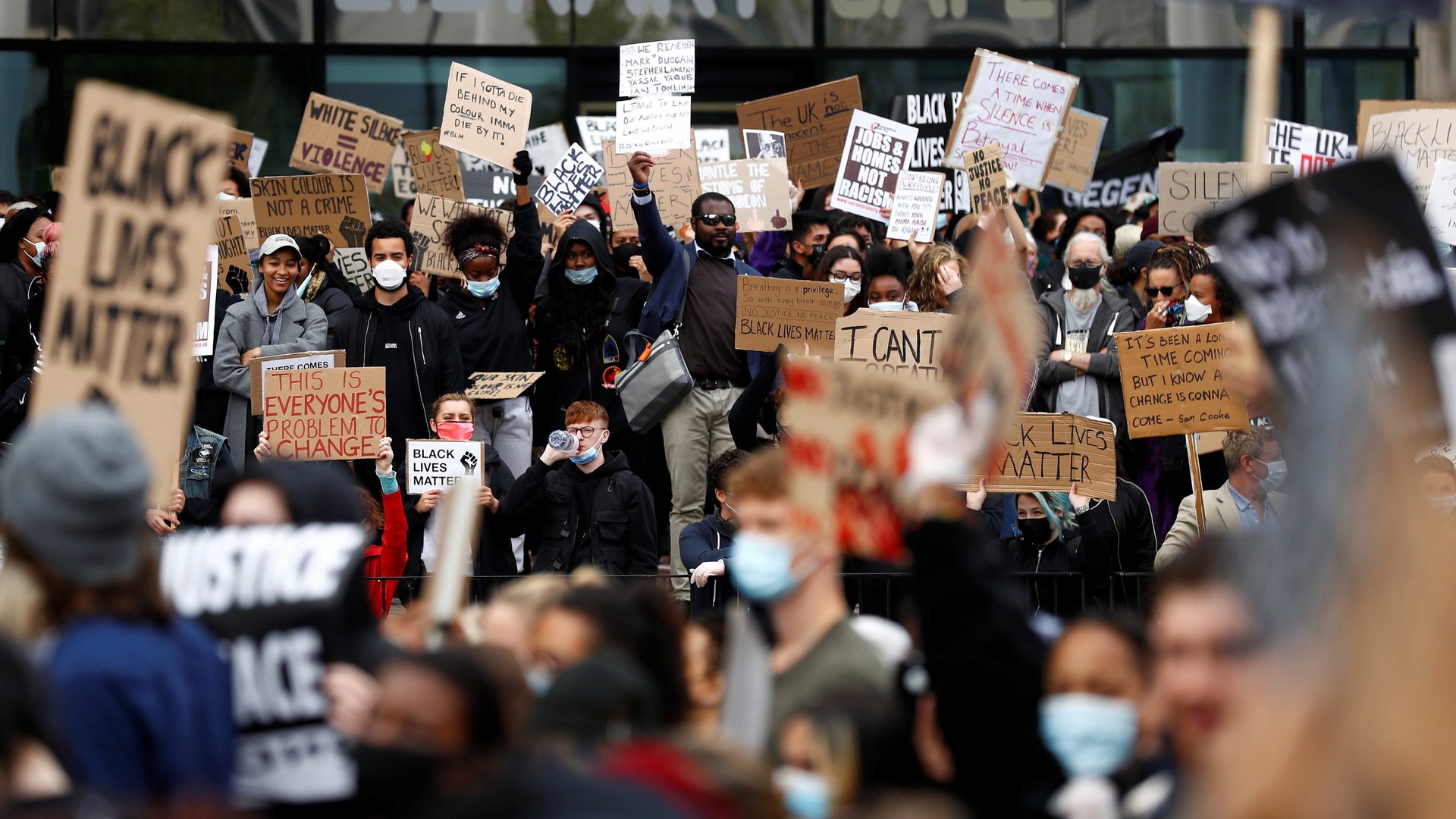How to address racism like the public health crisis it is
The killing of George Floyd by police in Minneapolis has sparked public outcry across the United States, including its medical associations. Over the past week, several have made it clear that in their eyes, racism is a public health issue.


The killing of George Floyd by police in Minneapolis has sparked public outcry across the United States, including its medical associations. Over the past week, several have made it clear that in their eyes, racism is a public health issue.
Many of those statements—including those from the American Medical Association, American College of Physicians, the American Academy of Pediatrics, and the American Public Health Association—have highlighted the police brutality that disproportionately affects Black Americans. But all of them ultimately allude to a more foundational health threat.
Health encompasses mental, social, economic, and educational success and stability—all of which are eroded by structural racism. If US institutions want to combat racism like the public health issue it is, they need to address not its symptoms, but its causes: the centuries-old systems that oppress people of color.
The medical community has long acknowledged the ways that racism harms health. But the problem has gone by a different name: social determinants of health. The US Department of Health and Human Services has a program called Healthy People 2020 that sets out to “create social and physical environments that promote good health for all” in the next decade, acknowledging that access to economic opportunities, educational resources, and environmental safety have clear impacts on health.
What it doesn’t clearly acknowledge is the direct link between social determinants and racism. In the US, Black Americans are less likely to own homes or have access to adequate health care, education, and job opportunities. The impacts of these social determinants are visible in heightened death rates across many diseases; right now, communities of color are bearing a disproportionately high burden of fatalities from Covid-19. Black Americans experience high rates of serious psychological distress as a result of exposure to racism; as many as one in four Black children who have been exposed to violence are at risk of developing post-traumatic stress disorder. These mental health concerns can also manifest in physical symptoms like high blood pressure.
“Although we have never been more attentive to such concepts as the social determinants of health and health equity, our analysis is ironically myopic,” wrote Mary Bassett, a former commissioner of the New York City Department of Health and Mental Hygiene now at Harvard University, in 2017. “We must explicitly and unapologetically name racism as we protect and promote health.”
Some parts of the US are doing so. The state of Ohio and several other smaller municipalities have moved to declare racism as a public health crisis, with the intent of making it an issue more capable of receiving funding to combat it.
Putting the name to it is one step. The harder part is determining what funding efforts could have the most impact. Some municipalities might prioritize police reform, in an attempt to stem the most visible, violent manifestations of racism. But “police brutality…is an expression of racism as part of a system,” says Abraham Salinas-Miranda, a physician and professor of public health at the University of South Florida.
“If we’re going to address structural racism, the first thing we have to do to be clear about what it is and how it operates,” says Linda Murray, a retired physician with a masters in public health.
Systemic change can start with individual choice, as some public health messaging campaigns have reflected. Campaigns like “Friends Don’t Let Friends Drive Drunk,” from the 1980s, or the Truth Initiative of the 1990s that advertised against youth smoking, worked by normalizing healthy behaviors, explains Claudia Parvanta, a professor of public health messaging at the University of South Florida and co-director of the World Health Organization’s Collaborating Center for Social Marketing.
But the shortcoming of these campaigns, Murray explains, is that they fail to address why people develop habits that are harmful to physical health. Putting the onus on the victims of racism won’t change anything. “In the recent time period, we’ve inappropriately focused on individual lifestyle issues,” she says. It’s like a doctor prescribing an aspirin for a headache she knows is caused by a brain tumor. It may work in the short term, but the problem will eventually manifest itself in ways that are harder to treat.
Public health has some frameworks for approaching pervasive issues like racism. Murray points to the work done by Rev. Dr. Martin Luther King Jr. in the 1960s: He worked to eradicate the slums in Chicago not simply by improving the inadequate housing in which many Black Americans lived, but by increasing access to education, job opportunities, and health services.
The result then was positive: “The Chicago marches were concluded by a broad and sweeping agreement reached between civil-rights leaders and a wide spectrum of city agencies, real-estate dealers, religious leaders, and a wide spectrum of city agencies, real-estate dealers, religious leaders, and top business and labor figures,” King wrote in the Christian Science Monitor in 1967.
In their fight against slums, King and his supporters found ways to address some of the social determinants that were ultimately harming the health of those communities. That’s how public health campaigns against racism can function today, too.
They can try to address racism before it happens, says Salinas-Miranda, by teaching children to celebrate diversity. Then when it happens, by listening to those in communities affected by racism and providing them the resources they need. And finally, by working to heal the trauma caused by years of living in a racist society.